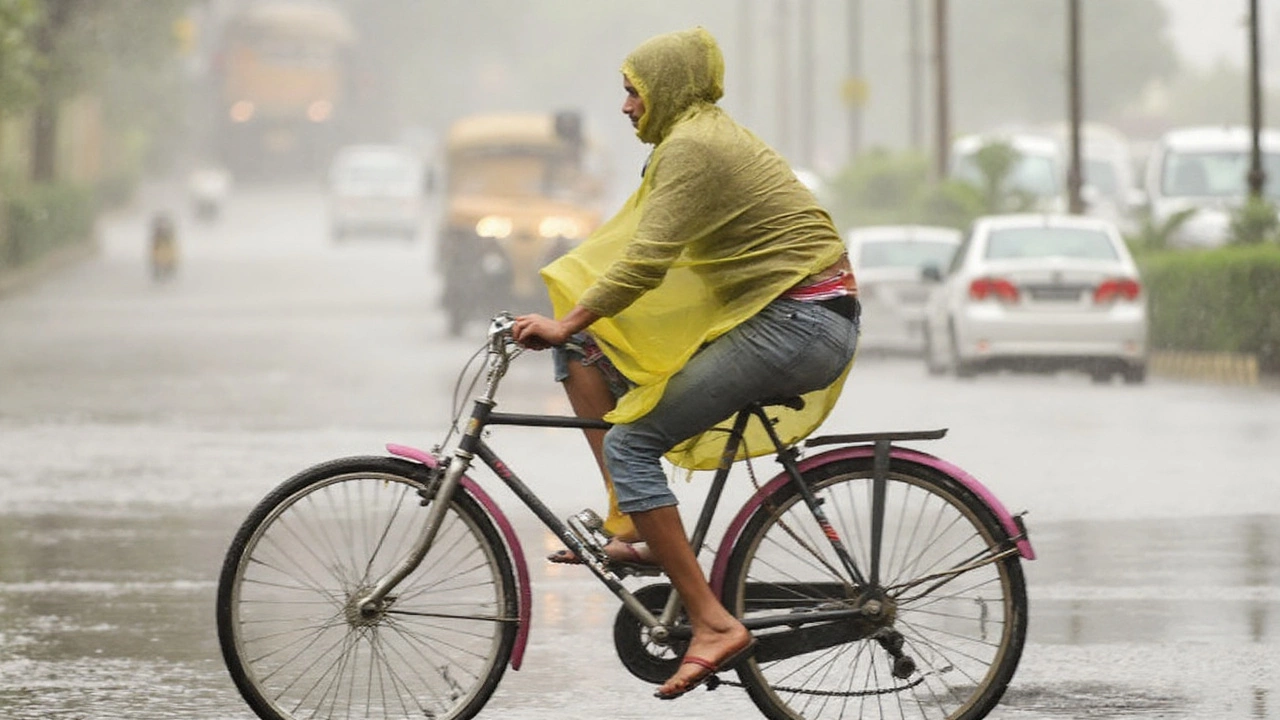Bihar Weather Alert – What’s Happening and How to Stay Safe
Every monsoon season brings sudden downpours, flash floods and road chaos in Bihar. The India Meteorological Department (IMD) issues weather alerts to warn people about heavy rain, rising rivers and the risk of landslides. If you live in Patna, Muzaffarpur or any nearby district, knowing how to read these alerts can save time, money and even lives.
How IMD Issues Bihar Weather Alerts
IMD classifies weather warnings into three colours: yellow (caution), orange (danger) and red (extreme). A yellow alert means light to moderate showers, while orange signals heavy rain that may flood low‑lying areas. Red alerts are rare and mean life‑threatening conditions – think river overflow and landslides. The alerts are posted on the IMD website, local news portals and sent via SMS in many districts.
Recent Alerts You Should Know
In the past week, the western part of Bihar saw an orange alert after the Ganges rose 2.5 cm above normal. The forecast predicted up to 80 mm of rain in a 24‑hour window, causing waterlogging in Muzaffarpur and Samastipur. The next few days carry a 70 % chance of continued showers, especially in the districts of Kishanganj and Purnia, where low‑lying fields are most vulnerable.
Experts advise you to keep an eye on the timing of the alerts. Orange warnings are usually issued a few hours before the rain hits, giving you a window to move valuables to higher ground, charge phones and stock up on essential medicines.
Practical Tips to Beat the Monsoon
1. **Stay Informed** – Subscribe to IMD alerts on your phone or follow trusted local news channels. 2. **Secure Your Home** – Check roof leaks, clear gutters and place sandbags near doors if flooding is likely. 3. **Plan Your Commute** – Avoid low‑lying routes, use higher‑ground roads and keep a spare set of car keys inside the vehicle. 4. **Emergency Kit** – Keep bottled water, non‑perishable food, flashlight, batteries and a basic first‑aid kit ready.
If a red alert is issued, move to a safe location immediately. Community centres, schools and government shelters are usually opened in the worst‑hit districts. Don’t wait for the water to reach your doorstep – act early.
Where to Find Real‑Time Data
The IMD portal provides a live map showing rain intensity, river levels and alert zones. You can also download the “MyWeather” app for push notifications. Many local NGOs post hourly updates on WhatsApp groups, especially for villages that lack internet connectivity. Having at least one reliable source is better than none.
Remember, monsoon rains are essential for agriculture, but they can turn dangerous fast. By staying alert, preparing early and following safety steps, you can protect yourself and your family while the season passes.
Got a question about a specific district’s alert? Drop a comment below and we’ll help you decode the warning in plain language.
Bihar weather alert: What we actually know about Aug 21 lightning risk and the talk of seven districts
There’s buzz about a lightning warning for seven Bihar districts on Aug 21. As of now, no official IMD bulletin naming specific districts is public. August norms still point to warm, humid days (28–35°C) and scattered thunderstorms through the month. Here’s what to watch, how IMD issues alerts, and the safety steps that matter most during late-afternoon storms.





